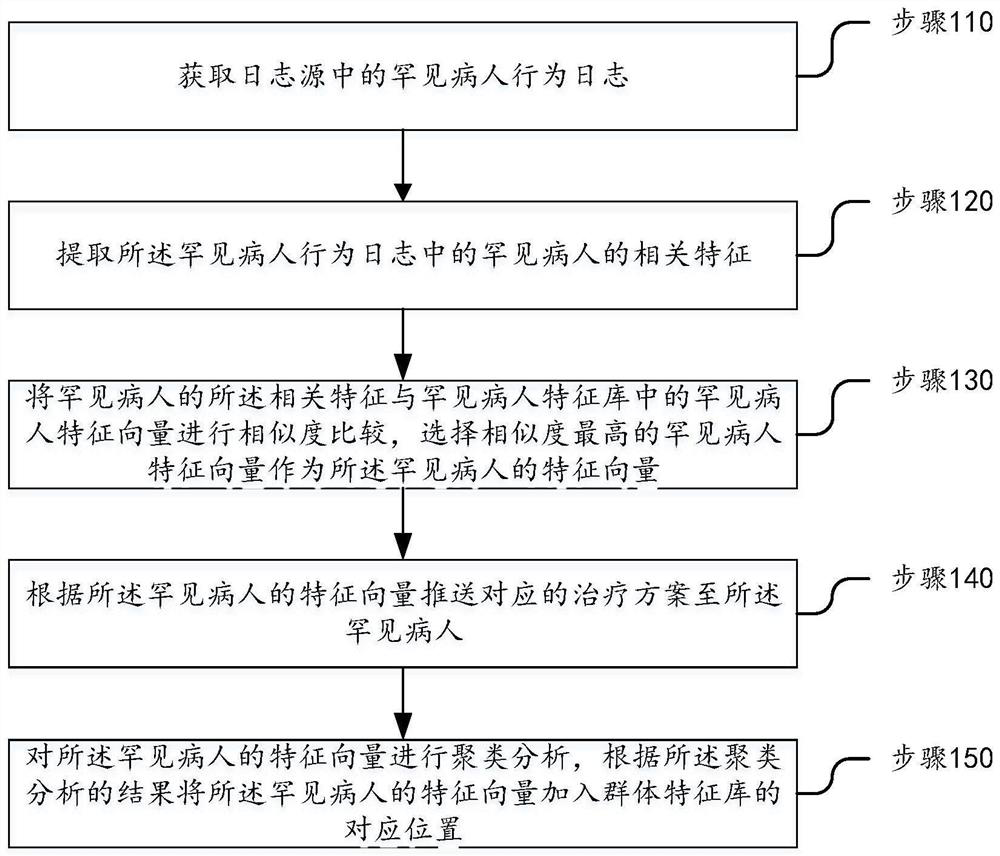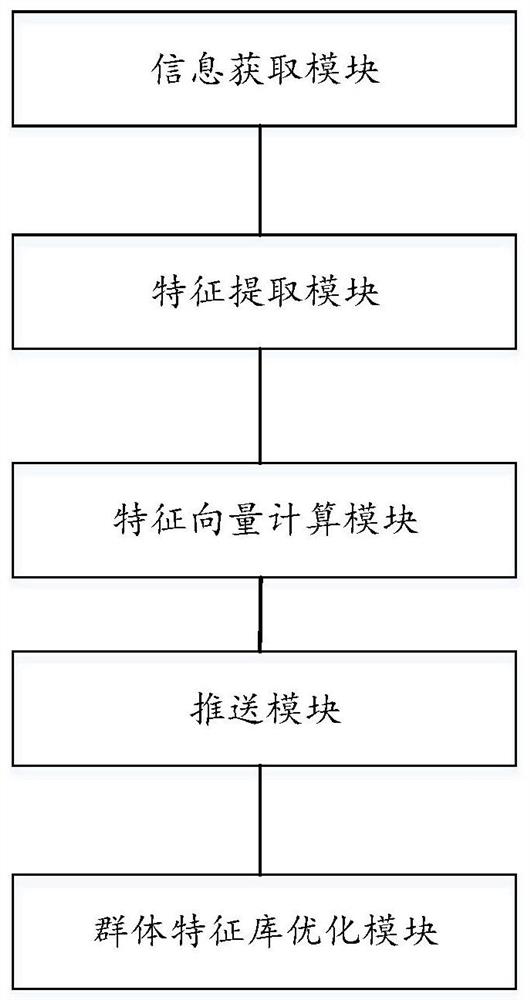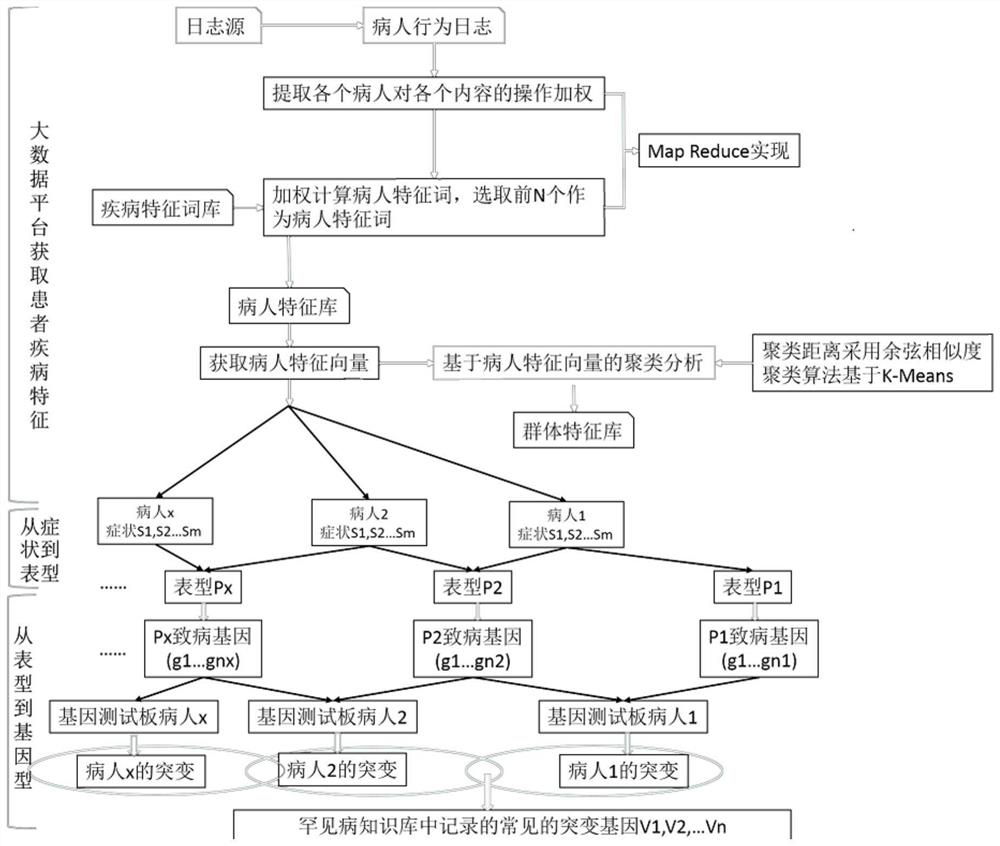Rare disease auxiliary analysis method and device based on artificial intelligence and storage medium
A technology of artificial intelligence and auxiliary analysis, applied in the field of computer vision, can solve the problems of lack of sharing mechanism in sample database and hospital information system, small data application scale, incomplete standardization of gene sequencing standards and data analysis standards, etc. The effect of structural data storage and automatic analysis
- Summary
- Abstract
- Description
- Claims
- Application Information
AI Technical Summary
Problems solved by technology
Method used
Image
Examples
Embodiment 1
[0067] Embodiment 1, the present disclosure proposes to provide an artificial intelligence-based auxiliary analysis method for rare diseases, which includes the following steps:
[0068] Step 110, obtaining the rare patient behavior log in the log source;
[0069] Step 120, extracting the relevant features of rare patients in the rare patient behavior log;
[0070] Step 130, comparing the similarity between the relevant features of the rare patient and the rare patient feature vectors in the rare patient feature database, and selecting the rare patient feature vector with the highest similarity as the rare patient feature vector;
[0071] Step 140, push the corresponding treatment plan to the rare patient according to the feature vector of the rare patient;
[0072] Step 150: Perform cluster analysis on the feature vectors of the rare patients, and add the feature vectors of the rare patients to corresponding positions in the population feature database according to the resul...
Embodiment 2
[0171] Example 2, it is possible to improve the population feature database and establish a rare disease knowledge database, which can analyze the behavior of users and push corresponding treatment plans for users according to the analysis results, which solves the problem of multiple heterogeneous data storage and automatic treatment of rare disease patients. problem of analysis.
[0172] refer to Figure 6 , Embodiment 3, the present invention also proposes an auxiliary analysis device for rare diseases based on artificial intelligence, including:
[0173] memory 500 for storing computer programs;
[0174] The processor 400 is configured to implement the steps of the anti-tampering method for advertising landing pages based on knowledge graphs according to any one of claims 1 to 7 when executing the computer program.
[0175] After applying the above method, Example 3 can improve the population feature database, and establish a rare disease knowledge database, which can an...
PUM
 Login to View More
Login to View More Abstract
Description
Claims
Application Information
 Login to View More
Login to View More - R&D
- Intellectual Property
- Life Sciences
- Materials
- Tech Scout
- Unparalleled Data Quality
- Higher Quality Content
- 60% Fewer Hallucinations
Browse by: Latest US Patents, China's latest patents, Technical Efficacy Thesaurus, Application Domain, Technology Topic, Popular Technical Reports.
© 2025 PatSnap. All rights reserved.Legal|Privacy policy|Modern Slavery Act Transparency Statement|Sitemap|About US| Contact US: help@patsnap.com



